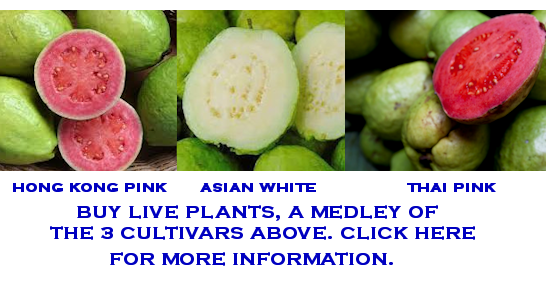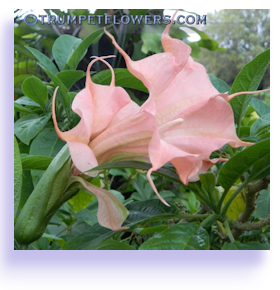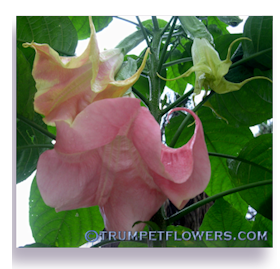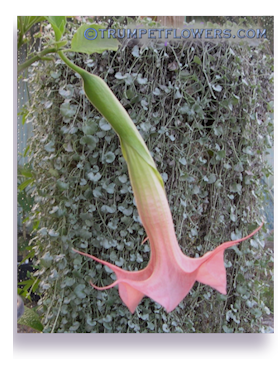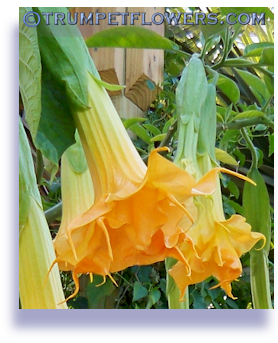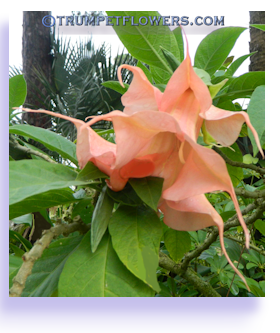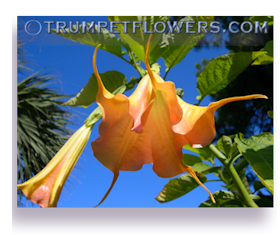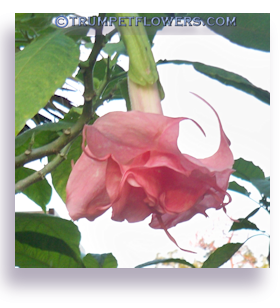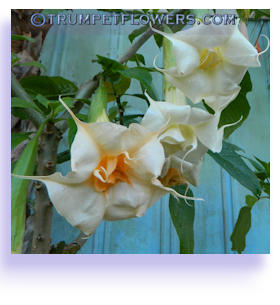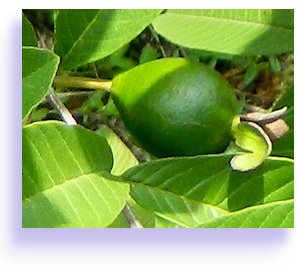 Guava is an easy, very fragrant plant to grow. Be it from seed or an existing plant, learning just a few tricks can add to your garden a lovely tree or hedge, that has the benefit of fruiting up to twice a year. Growing to a maximum height of 20 feet, they are easy to control and place out in the subtropical landscape.
Guava is an easy, very fragrant plant to grow. Be it from seed or an existing plant, learning just a few tricks can add to your garden a lovely tree or hedge, that has the benefit of fruiting up to twice a year. Growing to a maximum height of 20 feet, they are easy to control and place out in the subtropical landscape.
Guava comes in many different forms and flavors. There is Asian White Guava (Apple Guava), Maylaysian Red Guava, Mexican Cream, Pink fleshed Guava, Ruby Guavas, Yellows, and the more well known 'Strawberry' and 'Pineapple' Guavas, commonly sold in South Florida as hedges. The last two are actually not guava at all, rather they are classified as 'feijoa'. Guava proper are called 'Psidium'. The proper name of a guava tree is Psidium guajava. The shrub type guavas are properly called Psidium littorale.
Guavas typically prefer tropical to subtropical conditions, with cooler evenings a plus. But don't be dismayed if you live in a climate zone that has frost or light freezes, the feijoas mentioned above have been known to do well under these conditions, and will still set flower and fruit for you. Feijoas have been known to go as low as 12 degrees and still fruit and flower. True Guava, the Psidiums, do not like frost and it can damage or even kill them.
Guava also have many different taste variations and texture of flesh. Amongst them, you can find both crisp and soft fleshed, and flavors ranging from lemon to cinnamon, with many inbetween. Most guava have a slightly tart flavored flesh, but a lot of the taste also depends upon when you pick them. As you go through your own growing experience with them, pick some after the skin begins to turn, and leave some to ripen further before tasting. Let a few fall from the vine before tasting. In this manner you will get all of the different flavors that guava can offer on just one bush, and be able to better find which flavor is right for you.
Guava are great to eat fresh, or use in recipes, such as the exotic Guava Tiramisu recipe. Whether eaten fresh from the tree or canned, pickled, or juiced, Guava has a refreshing flavor that will add a taste of the tropics to your homestead. Here' a delicious Guava Cake Recipe. This Guava Cheese Pastelillos Recipe is to die for!
Growing Guava is fairly easy. They like a sandy soil with some loam added. Guava also like Granular type Palm and Citrus fertilizer, added once in spring and then again in summer. Throw in some extra potassium to promote flowering and fruiting. Guava can fruit the first year grown from seed, or take up to 3 years in other cases. Much of the fruiting may depend upon the particular cultivar you are growing.
Most Guava prefer full sun, although I have a few who get strong morning sun in the spring and summer, and only dappled afternoon sun. These Guavas do very well, and set fruit for me every year. Florida is notorious for grueling Dog days, and perhaps that's why those Guavas do OK with that protection. If you live in the Southwest desert, protection in afternoon sun conditions might also be helpful. But in other locales, try to give them as much sun as possible.
Guava can also take on dry conditions quite well, especially after a healthy root system has been established.
Guava make great container garden plants. Because they have a shallow root system, they will do well in large containers, and set as much fruit as they would in ground. I start mine out in 1 quart pots, and as they age I move them up. Within the first year (seed grown) they have been moved into 1 or 2 gallon pots, after crowding the 1 quart pots very well. At the end of the second season, they are in 5 gallon pots. By the third year, they happily live in 10 gallon pots. I quit repotting when they hit 22 gallons. Save money on these pots by purchasing the large laundry tubs with the rope handles at the big box stores. They only cost about 8 dollars, and will easily house a full grown Guava.
Guava can make a thick hedge. Regular pruning to tighten up the shape will give you a lovely hedge that also bears fruit for you and your family. If hedging is not for you, they also do well on their own, in ground, spaced about 10 feet apart for good air circulation.
Fruit flies can be a bad pest to Guava in South Florida, attacking the fruits and leaving their eggs (and then larvae) within the fruits, spoiling your crop. Air circulation between plants help curb this. You can also spray a mixture of 4 drops peppermint oil, 2 drops clove oil, 1 half teaspoon Fels Naptha bar soap (scraped) to one 16 ounce bottle of Rubbing Alcohol. Blend well, then place all in a 1 quart spray bottle. Fill the balance with water. Shake well again, and coat the fruit with the spray every other day or so during the height of fruit fly season, if they are a problem for you.
Guava benefit from pruning. In zones 9 and higher, prune them in late fall after fruiting for spring fruit. After they fruit in spring, prune once again to get a second fruiting in fall. Sometimes they will refuse to fruit twice a year, but most of the time they will, if all other growing conditions have been met. Guava does set fruit best on older wood, so keep that in mind when pruning.
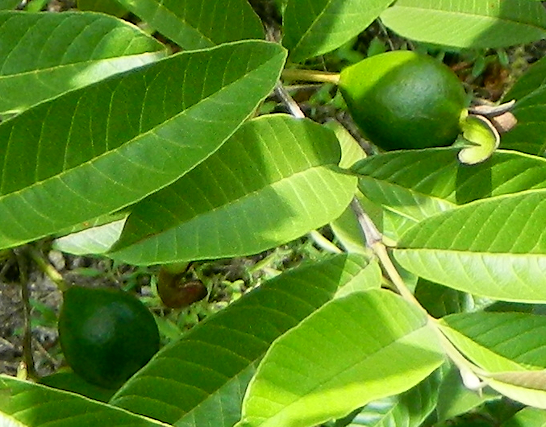
Guava are also easy to grow from seed, and most come true from the original. Soak the tiny seeds overnight in a dampened paper towel that has been placed in a plastic baggie. Wring the water out and replace every day for about three days, and then lightly sow in a pure vermiculite mix. This inhibits mold and fungus gnats. If you have good viable seeds, they should sprout within 2 to 4 weeks. Allow them to grow out a couple of pairs of true leaves before gently lifting them out and placing in separate pots in a regular soil less mixture of peat, perlite, compost and vermiculite.
Young Guava tend to wilt when their soil mix dries out, and do benefit from protection from strong sun. After the plants reach about 6 months of age, they will be able to take sunnier conditions, and tolerate drying out a bit more. Slowly adapt them to the environment you plan on growing them out to. By the time they are 1 year old, they should be ready to place in the ground if that is your desire. Mine are about 4 feet tall by the time they are one year old, and have many branches on them at that time.
The fruit of Guava can range in size, from that of a peanut to that of a nice sized apple. Much of this depends on the cultivar you are growing. Some are round in shape, others are shaped like pears. As I mentioned earlier, pick them at different ripening stages to experience the different flavors they pocess.
Guava trees naturally have a peeling type of bark. This alarms some first time growers, but it is totally normal for this plant. It can also have slight die off of some older branches, just prune these back to living green tissue and the plant will be just fine.
Guava can be reproduced from the cuttings of semi-hardwood, by lifting up suckers from the base of the tree, or from seed. They are also easy to graft.
Guava have been touted to help control many ailments. Among those are thyroid and brain stability, help with controlling diarrhea, and even help with some forms of cancer. How true any of that is left to be studied, but since the plant has been cultivated for hundreds and hundreds of years, by many different cultures, I am sure there is some truth to some of the simpler claims.
Whatever your choice, Guava is a plant that has many uses in the landscape, including edible. The plant attracts bees and butterflies to the very fragrant flowers, and can be the home to many other beneficial insects as well. I hope you give them a try.
Tags: Care and Grow Guava, care and grow guava, guava, grow guava, guava plants from seed, pruning guava, hedges,
